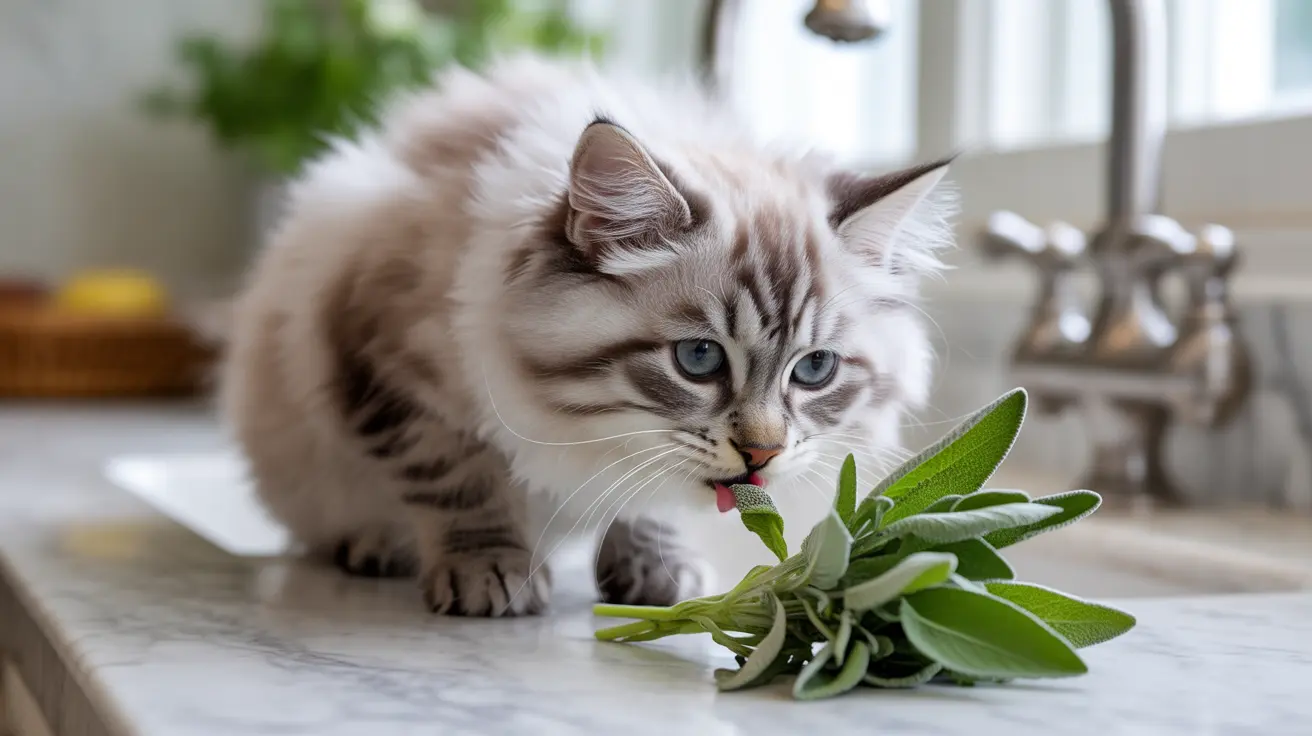Many cat owners wonder about their feline friends' relationship with common herbs, particularly sage. While this aromatic herb is a staple in many kitchens, its appeal to cats and safety considerations deserve a closer look. Let's explore whether cats are naturally drawn to sage and what you need to know about its effects on your feline companion.
Understanding the relationship between cats and sage is crucial for responsible pet ownership, as even common household herbs can have unexpected impacts on our feline friends. This comprehensive guide will help you make informed decisions about sage exposure in your cat-friendly home.
Understanding Cats' Natural Response to Sage
Unlike their enthusiastic reaction to catnip, most cats show minimal interest in sage. While some cats might investigate the herb out of curiosity, they rarely display the same excited behavior that catnip triggers. This indifference makes sense from a biological perspective, as cats are obligate carnivores with little natural inclination toward herbs.
The herb's strong aroma might occasionally attract cats' attention, but this interest typically stems from novelty rather than any inherent appeal. Most cats will give sage a cursory sniff and move on, showing little desire to consume or play with it.
Safety Considerations for Cats and Sage
While sage is classified as non-toxic to cats by the ASPCA, this comes with important caveats. Small amounts of culinary sage are generally safe, but larger quantities can cause digestive issues. The essential oils in sage can be particularly problematic for cats, who lack the necessary liver enzymes to process these compounds effectively.
Potential Risks of Sage Exposure
Watch for these warning signs if your cat has consumed sage:
- Digestive upset (vomiting or diarrhea)
- Lethargy or unusual behavior
- Allergic reactions (skin irritation or respiratory issues)
- Signs of essential oil toxicity (if exposed to concentrated forms)
Safe Ways to Handle Sage Around Cats
If you grow or use sage in your home, following these guidelines can help protect your cat:
- Keep dried sage in sealed containers
- Grow sage plants in areas your cat can't access
- Never use sage essential oils around cats
- Ensure proper ventilation when cooking with sage
Understanding Your Cat's Individual Response
Each cat may react differently to sage exposure. Some might show complete indifference, while others might display curiosity or even adverse reactions. Observing your cat's individual response helps determine appropriate boundaries for sage exposure in your household.
Alternative Safe Herbs for Cats
If you're looking for cat-friendly herbs, consider these safer alternatives:
- Cat grass (specifically grown for feline consumption)
- Catnip (most cats respond positively)
- Valerian root (can have similar effects to catnip)
- Cat thyme (specifically grown for cats)
Frequently Asked Questions
Is sage safe for cats to eat, and how much can they consume without harm?
Sage is generally safe for cats in very small amounts, but it's best to limit exposure. A few leaves or a small sprinkle of dried sage is unlikely to cause harm, but regular consumption should be avoided. Never allow access to sage essential oils.
Why do some cats show curiosity or attraction to sage, but most seem indifferent?
Cats' interest in sage usually stems from natural curiosity about new scents in their environment. The herb's strong aroma might attract initial investigation, but most cats don't find it particularly appealing or stimulating like they do with catnip.
What are the health risks and symptoms if my cat eats too much sage or sage essential oil?
Overconsumption of sage can cause digestive upset, including vomiting and diarrhea. Sage essential oil exposure is more serious and can lead to liver toxicity, neurological symptoms, or respiratory issues. Seek immediate veterinary care if you suspect essential oil exposure.
Can burning sage around my cat cause respiratory or allergic reactions, and how can I minimize those risks?
Yes, burning sage can irritate cats' sensitive respiratory systems. Ensure proper ventilation, keep cats out of rooms where sage is burning, and watch for signs of respiratory distress. Cats with existing respiratory conditions are particularly vulnerable.
Are there safer herb alternatives that I can offer my cat for enrichment or mild health benefits?
Yes, cat grass, catnip, and valerian root are safer alternatives specifically known to be both safe and appealing to cats. These plants can provide enrichment and entertainment without the risks associated with other herbs.
Conclusion
While cats generally don't show strong interest in sage, understanding its potential effects and maintaining appropriate precautions ensures your cat's safety. Focus on providing cat-specific herbs and enrichment options rather than experimenting with culinary herbs like sage. When in doubt, always consult with your veterinarian about introducing any new plants or herbs to your cat's environment.






